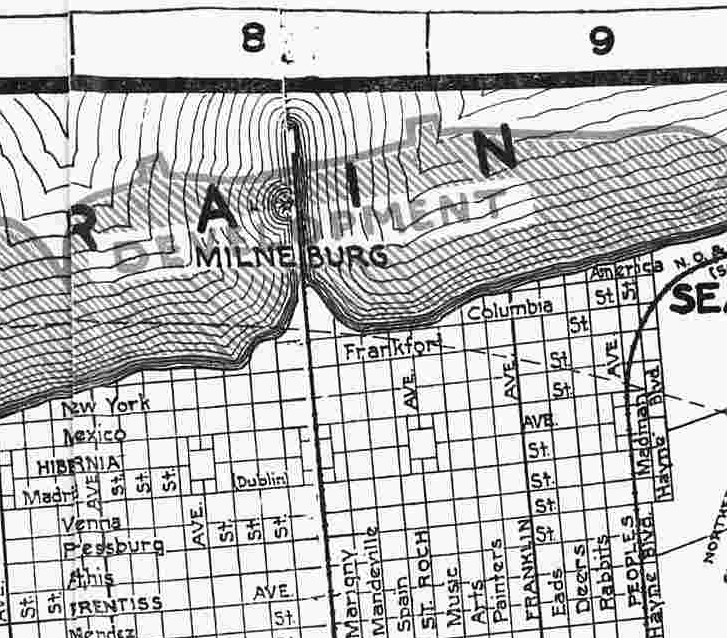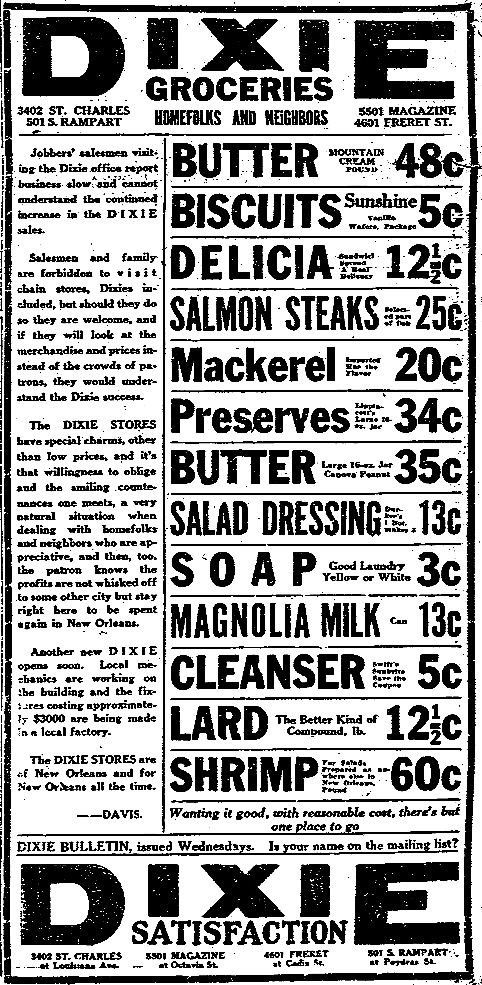|
Today in New Orleans History |
|
|
July 18


 To receive an update for each day in New Orleans history,
join our facebook page - Today in New
Orleans History.
Milneburg was named for land owner developer Alexander Milne, however local
pronunciation came to call it "Mill-en-burg" or "Mil-lan-bug", and the name has often been seen in print
misspelled Milenberg and variations. Early on it was officially designated Port Pontchartrain, but the "Milneburg"
name soon replaced this for all uses except for United States Coast Guard designation of the lighthouse there, which continued
to be listed as "Port Pontchartrain Lighthouse" to 1929. In the early 19th century Milneburg
was connected to the city, which then was along the riverfront, by Elysian Fields Avenue. In 1830 it was decided to build
the region's first railway along this route, and the Pontchartrain Rail-Road began steam locomotive transport of people and
cargo along the 5-mile route on April 23, 1831. A long pier was built into the shallows of the lake, with a portion of the
rail line running atop it, enabling ocean going ships to dock at Milneburg. The port boomed, and hotels, saloons, bath houses,
and resorts were built around it, mostly atop high wooden piers in the shallows of the lake, connected by a network of pier
like wooden boardwalks. The importance of Milneburg in shipping declined in the late 19th century, but
it remained an important resort. A series of "camps" (houses on piers in the shallows of the lake) were regularly
rented out for parties, with fishing, pic-nics, and dancing to live bands. Milneburg was important in
the early development of jazz. Bands from different parts of the city and across racial lines came together here to hear one
another and to sometimes compete with each other for popularity. Musician Sharkey Bonoano was born in Milneburg, and
the area is commemorated in "Milneburg Joys" by the New Orleans Rhythm Kings who recorded the tune on
July 18, 1923 (with Leon Rappolo, Paul Mares, and Ferdinand 'Jelly Roll' Morton) in Richmond, Indiana. The song remains
a jazz standard. In the 1920s and 1930s a project to dredge new land on what
had been the shallows of Lake Pontchartrain extended the shorline out and was the end of old Milneburg. The Pontchartrain
Beach amusement parkwas built on what had been the center of Milneburg. Later the University of New Orleanswas built nearby.
The neighborhood now designated as "Milneburg" by the New Orleans Planning Commission is actually to the south and
inland of the historic Milneburg. (WIKI)  To receive an update for each day in New Orleans
history, join our facebook page
- Today in New Orleans History
On July 18, 2010, New Orleans born writer Anne Rice auctioned off her large collection
of antique dolls at Thierault's in Chicago. (Wiki) On July 18, 2008, Tom Benson's Louisiana Media Company consummated their purchase
of WVUE-DT, the Fox affiliate for the New Orleans area and by virtue of their affiliation, the major carrier of Saints games
as part of the NFL on Fox contract. Since the sale, the station has also become the de facto home of the Saints, including
coach's shows and preseason games. (Wiki) NORD photo, baseball player, Daniel Staub, July 18, 1955. NORD photo, Bunny Friend Ball Clubs -- Firmin Simms, coach, July 18, 1955. On July 18, 1944, the Liberty ship E. G. Hall was launched by Delta
Shipbuilding Company. Photographs -- July 18, 1940, Relining of the walls of the South Claiborne Avenue canal is about eighty percent complete. The process shown here is called gunniting in which cement and sand are forced through
a rubber hose with ninety pounds of air pressure and mixed at the nozzle with water. The canal will be lined with concrete
from Third Street to Melpomene Street. Also photos of the Installation of a drainage system on Palmyra Street at South
Prieur Street. Included also on the page, WPA workers gunniting the banks of the Upper Protection Levee from South Claiborne
Avenue to Palm Street. This view shows the Airline Highway in the background.(NOPL) NOPL photos, paving of North Claiborne Avenue near Alvar Street, July 18, 1937. Same link includes photos of the continuation of Orleans Street at City Park Avenue
-- views showing partial completion, filling of old canal, etc. on the same date as well as the paving of Robert E. Lee Boulevard
which connected Canal Boulevard with the lakeshore drive and furnished a traffic unit for lakeshore traffic (THis view shows
Robert E. Lee Boulevard near Pontchartrain Boulevard) and other photos taken on the same date regarding street paving. On July 18, 1937, the WPA began the construction of a concrete box culvert to replace
the open drainage canal on Canal Boulevard. The new system would serve the lakefront. This photograph shows Canal Boulevard near Fillmore Avenue. (Text and photograph from the New Orleans Public Library.)
|
|
|

To receive an update for each day in New Orleans history,
join our facebook page - Today in New
Orleans History.
Analytics |



